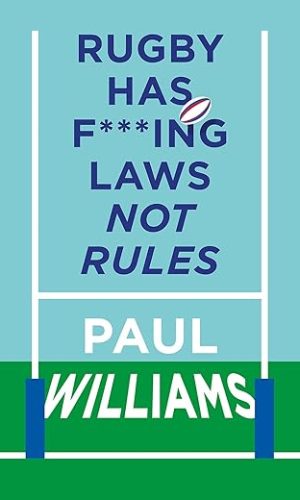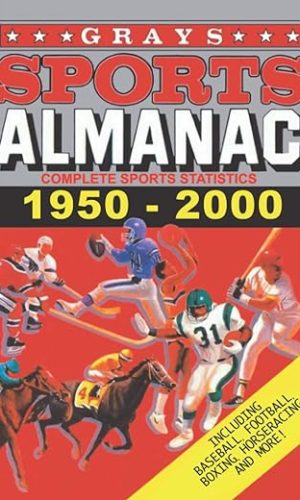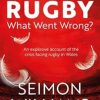Welsh Rugby: What Went Wrong?
£9.99
The glory days of Welsh rugby seem long ago now. Mortifying defeats, threatened strike action, institutionalised sexism, racism and homophobia in the WRU, bad financial management this book examines key events from the 1980s to today which have brought Welsh rugby to its present crisis. — Books Council of Wales
Read more
Additional information
| Publisher | Y Lolfa (24 Nov. 2023) |
|---|---|
| Language | English |
| Paperback | 192 pages |
| ISBN-10 | 1912631504 |
| ISBN-13 | 978-1912631506 |
| Dimensions | 14 x 1.5 x 21.5 cm |










by John Brinley
This excellent and lucid narrative of Welsh rugby’s decline and not-quite-yet-fall picks up where Fields of Praise left off. Dai Smith and Gareth Williams’ centenary history of the Welsh Rugby Union (WRU) has long established itself as the history of the oval-ball game in Wales from its rapid rise in the late Victorian era to the hundredth anniversary of its governing body in 1981, at the tail end of another golden age for the Welsh game. Smith and Williams showed how the rise of Welsh rugby was intimately interwoven with the fabric of Welsh industrial society and its search for communal meaning and identity.
Seimon Williams, in bringing the story right up to the present (the narrative even covers the recent World Cup in France) charts the unravelling of that fabric. As Williams shows, the international team fell abruptly from grace in the 1980s and, despite numerous false dawns, struggled to recover throughout the end of rugby’s officially amateur era and the dawn of (acknowledged) professionalism in 1995. Though the international side has recovered some of its credibility in the 21st century, Williams shows that its recovery has been engineered at the expense of an overriding focus on the international team alone, while the underfunded and mismanaged professional “regional” game has drastically deteriorated, seriously imperilling the international side’s future in the process.
Alas, this brief summary undersells just how infuriating, incompetent and avoidable has been the ongoing mismanagement of professional rugby in Wales. The politics of Welsh rugby are famously baroque and baffling but Williams here does a stellar job in unpicking the complexities and incomprehensibilities of committees and inquiries over the decades to lay bare, in a fast-paced, gripping though depressing account, just how things “went wrong” and where the blame lies.
Over the course of this tale, the WRU increasingly emerges as a disastrous custodian of rugby in Wales. Its governance of the sport in the professional era could not even generously be described as inept; as this narrative drums home, the union’s role in Welsh rugby seems more often to be that of a malicious, parasitical saboteur, ensuring that the worst possible choices are made at every turning point.
For people unfamiliar with the backstage business of Welsh rugby, the gallery of grotesques who parade across these pages, and the grim charade they make of governing a professional sport, will be almost unbelievable. Even to readers more familiar with the sorry story, it’s shocking to see all the glum facts put together in sequence. A lot went wrong, many times, and so much of it unnecessarily: venality and vanity among the sport’s administrators are prominent throughout this account.
Most recently, it has been revelations of what are sometimes charitably termed “traditional attitudes” and more bluntly called “rampant misogyny” among the upper echelons of the blazer-bedecked governing body that have drawn belated media attention to its many, many deficiencies. As this book makes clear, these awful recent disclosures are only the icing on the rotten cake.
Williams has done everyone interested in Welsh rugby a major service by mastering this mess of materials and shaping it into such a racy and readable book. Though the story of what went wrong is bleak, the ultimate effect of this work is galvanising rather than depressing. Now we know how Welsh rugby got into its present pit; next we need not only the roadmap for how to get it out, but also the men and women who can navigate the journey ahead. For all of these people, this gripping guide to the past few decades of Welsh rugby will be an indispensable handbook.